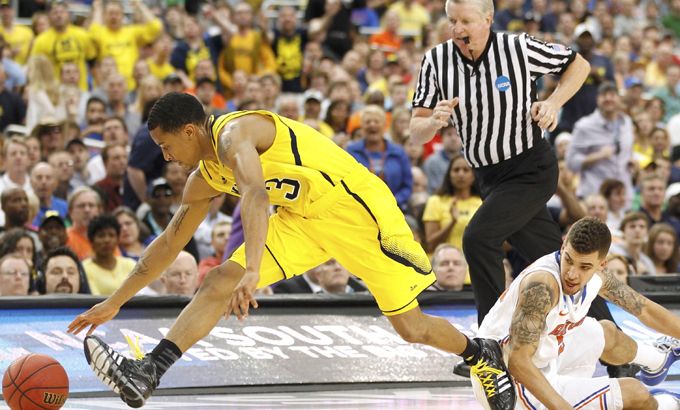
Dropping the ball on college sports?
We ask if university players in the US are getting a raw deal as millions are made off their sporting prowess.
Millions of sports fans in the US are gearing up to watch the finals of the National Collegiate Athletic Association (NCAA)basketball tournament in Atlanta.
|
“I think to an extent it is exploitation. There are very few industries where you would be able to generate this level of revenue without the key people who generate the money having any say in terms of the legislation that governs the games.“ -Luke Bonner, former college basketball player |
The rights to the ‘March Madness’ tournament alone cost broadcasters $770m a year, but the players do not share in this vast pool of revenue.
Many enjoy generous scholarships to universities, but they are not paid salaries to play. Critics argue that this is unjust considering that many coaches and NCAA officials earn seven figure pay checks.
Getting a place on a college team is also not necessarily a ticket to the big leagues. Just over one percent of men’s college basketball players, and under two percent of football players, go on to play in US professional leagues.
One study suggested that top men’s football and basketball players will lose out on at least $6bn in revenue between 2011 and 2015. Now, a number of ex-players are challenging what is known as the scholar-athlete model by taking the matter to court and suing the NCAA.
Between 2011 and 2012, the organisation’s revenue was more than $870m, and $705m of that came from broadcast rights agreements.
|
“I don’t know [how they cannot afford to play players] when you are making that kind of a revenue off of a sport which is not dissimilar in terms of the way it is played in professional sports – it’s just the same and it commands premier rents from the broadcast licensees and commands equal prices for the paraphernalia.“ – Michael Hausfeld, sports lawyer |
About 96 percent of the money goes back to schools to support their athletic programmes, cover travel costs to competitions, pay for student athletes’ insurance, and cover scholarship programmes.
Men’s college basketball coaches’ salaries can be quite lucrative. Wichita State is one of the teams in the semi-finals – their coach Gregg Marshall makes about $1.5m in compensation every year. University of Michigan is also in the semi-finals, and its coach John Beilein earns more than $2m a year.
But perhaps topping them all is basketball powerhouse Duke University’s coach, Mike Krzyzewski, who earned more than $4.5m in compensation in 2012. At some of the smaller universities like Mississippi Valley State, coach Sean Wood earns $87,000 dollars.
So, are the players getting a raw deal as millions are made off their sporting prowess?
To discuss the business of sports on Inside Story Americas, Kimberly Halkett is joined by Michael Hausfeld, a lawyer who represents a group of athletes suing the NCAA; Luke Bonner, who played college basketball for the University of Massachusetts; and Charles Clotfelter, a professor of public policy at Duke University and author of Big-Time Sports in American Universities.
|
“‘The ‘student athlete’ is a term that I use in quotes because it was made up by the NCAA, and its purpose is to make the football player look exactly like the rowing participant and that makes it easier to argue that these should be unpaid amateurs. But in reality the universities that have men’s basketball and football are running commercial entertainment programmers with lots of revenue and those enterprises look very different from the volleyball team.” – Charles Clotfelter, professor of public policy at Duke University |